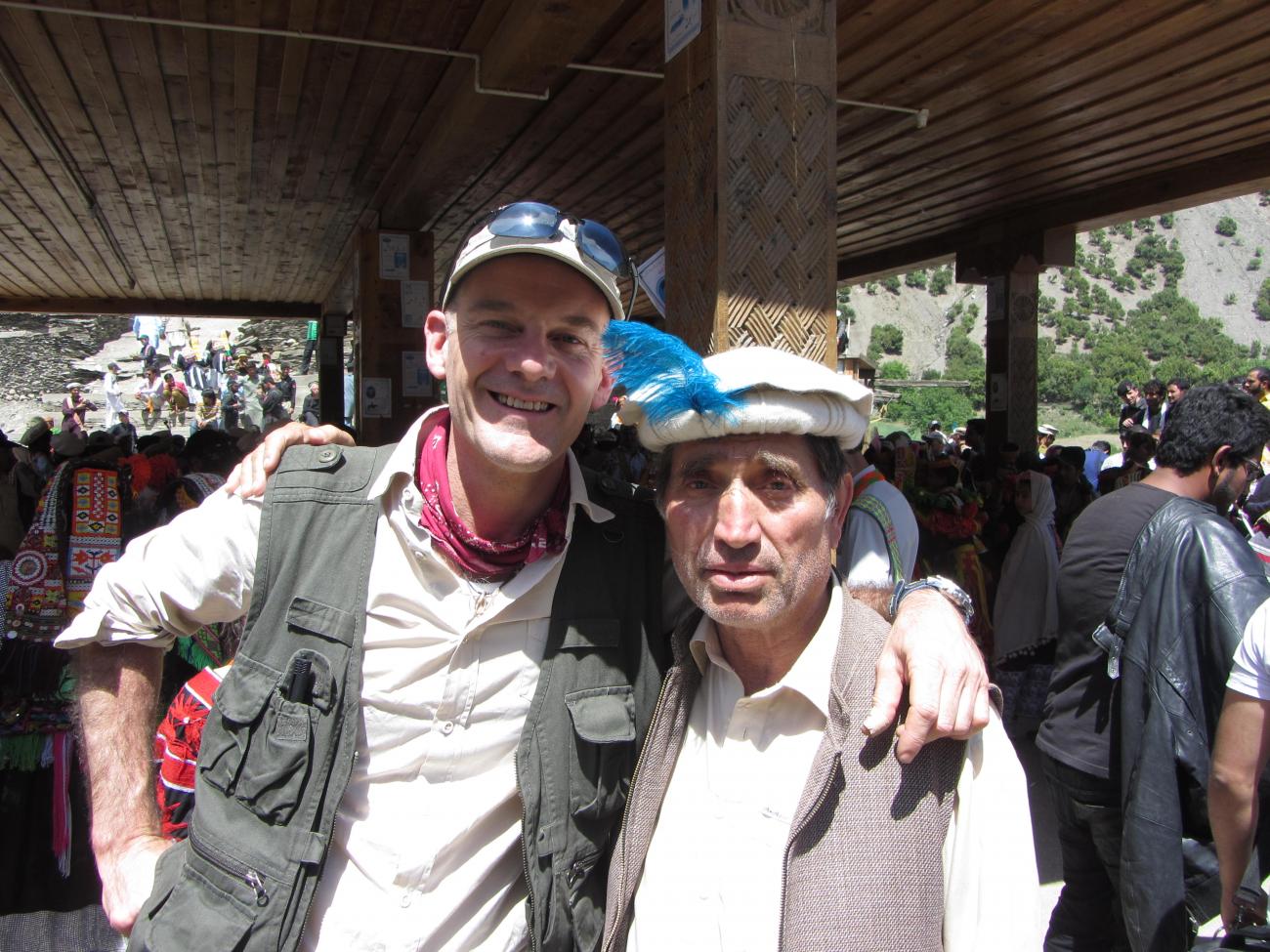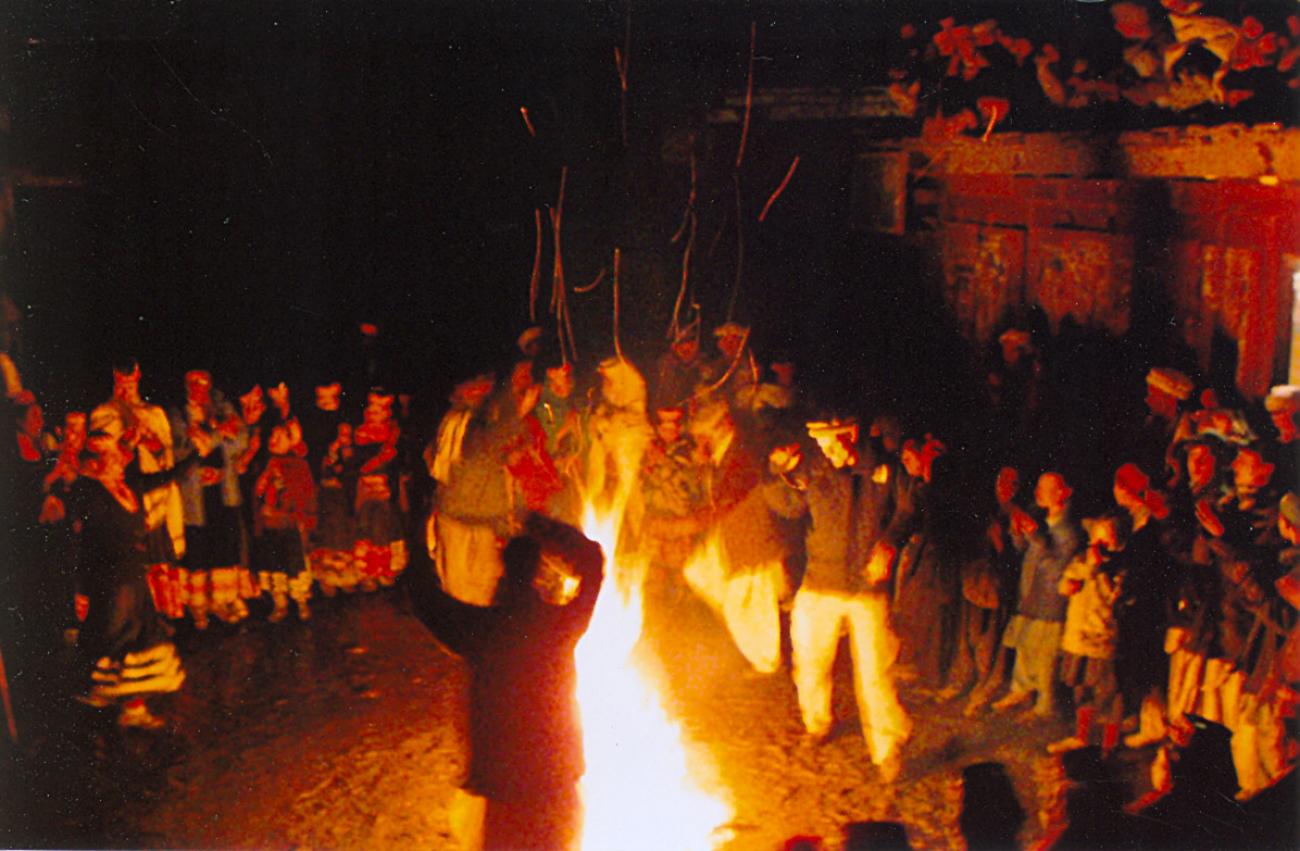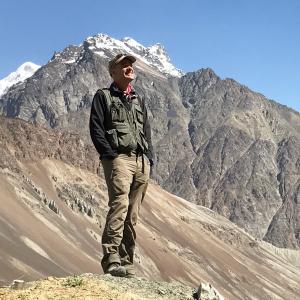
In the autumn of 1998, I ran my first ever trip to Pakistan and in doing so, Wild Frontiers was born. As I sit on a plane heading back to that country, 24 years later, I thought I’d jot down a brief synopsis of how that came to pass.
As a young man looking for adventure, in October 1991 I set off on a year-long, 20,000-mile motorcycle odyssey around Africa. Heading south out of London, I crossed France and the Med, drove across the Sahara and down the west coast of that magnificent continent all the way to Cape Town. From there, I turned back north and headed through east Africa to Cairo and home. As this journey also included not just one, but two love stories, I was advised to write a book about the adventure, which I duly did. It was called Running with the Moon, was published by Random House a couple of years later and has gone on to become something of a travel classic.
Well reviewed on its release, the publishers asked what I wanted to do next. I knew in a heartbeat; to travel in the footsteps of my two heroes from English literature, Peachy Carnehan and Daniel Dravot from Rudyard Kipling’s short story, The Man Who Would Be King. In this fictional tale of a Victorian daring duo, these two loveable rogues set off from the plains of India into the Hindu Kush to become kings for Kafiristan. Although my goal was not so lofty, I did want to travel a similar route and see India, Pakistan and Afghanistan, and discover what was left – if anything – of the pagan tribes that had been known to inhabit this mountainous region at the edge of empire.
.jpeg)
So in December 1995, I travelled to India. I spent four months wandering around that magical country, waiting for the snow in the mountains to melt and the passes open, before heading to Rajasthan. In Kipling’s tale, the story begins ‘three long summers and a thousand years ago’ at Marwar Junction, a small, dusty backwater in rural Rajasthan. From here I set off on my adventure, hitch-hiking on trucks travelling up the Grand Trunk Road, crossing the border into Pakistan between Amritsar and Lahore, and continuing up to Peshawar from where I crossed the Khyber Pass and entered war-torn Afghanistan.
At one time Kafiristan – meaning literally, land of the unbelievers – stretched for hundreds of miles across the mountainous borderlands between Afghanistan and the Indian subcontinent. A lawless region of pagan tribes, who believed in fairies, venerated wine and worshipped a god of war called Indra, it was a place few dared to venture… indeed to Victorians, travelling to Kafiristan was a synonym for suicide. This warlike rabble were renowned for marauding out of their mountain lairs, raping and pillaging the Afghan villages below, and returning home with captured slaves. But in 1895, the British demarked the border dividing British India from Afghanistan giving the Amir of Afghanistan, Abdul Rahman, the chance to send in his armies, subdue the tribes on his side of the border, and in what was probably the last force mass conversion in history, converted the unruly infidels to Islam. He then renamed the region Nuristan, the land of light.
However, the newly created frontier did not place all of Kafiristan, and the pagan tribes that lived there, on the Afghan side of the border. In a strange quirk of colonial happenstance, the less warlike Kalash – or black kafirs, as they were known – found themselves on the British side of the border and thus protected from the Amir’s armies. And so having trekked for six weeks through Nuristan, a time that saw me cross four high mountain passes, get shot at, be held captive and narrowly avoid 12 murders – the Nuristanis still harbour many of the nefarious traits of their Kafir ancestors – I finally crossed the last pass, back into Pakistan and entered the valleys of the Kalash.

And here I found a little piece of paradise. In fact, so taken was I by these peaceful and welcoming people and the beautiful valleys they inhabited that I put down my bags and stayed put for three months. And it was while I was here that Saifullah, the chief spokesperson for the Kalash with whose family I had taken up residence, suggested I start a travel company to bring tourists to the valleys. It seemed like a great idea. I went home, wrote my second book, For A Pagan Song about that journey, and then designed an itinerary. A year later, I returned with my first group. I called my nascent business Wild Frontiers, named after the Northwest Frontier, the province in which the Kalash lived.
Since then, Wild Frontiers has taken many hundreds of travellers to this often-misunderstood country. We now have itineraries in the north and in the south. You can travel here from China or India, as part of a group or tailor-made. When people ask me which Wild Frontiers' best trip is, I still say the first one we ever did, the Hindu Kush Adventure.
After five years, it’s great to be going back!
